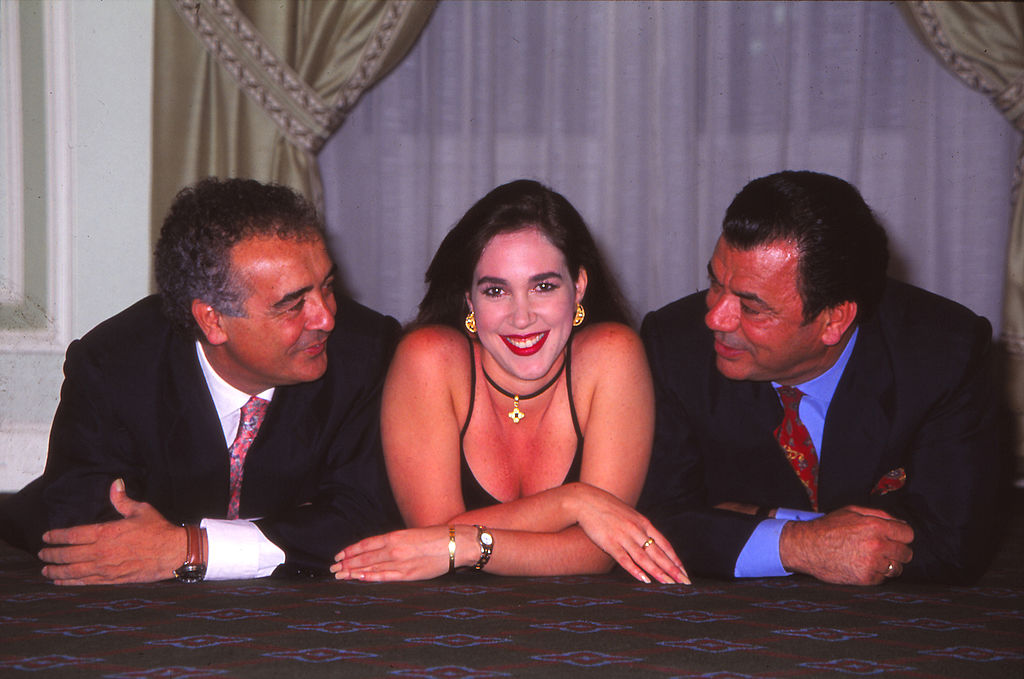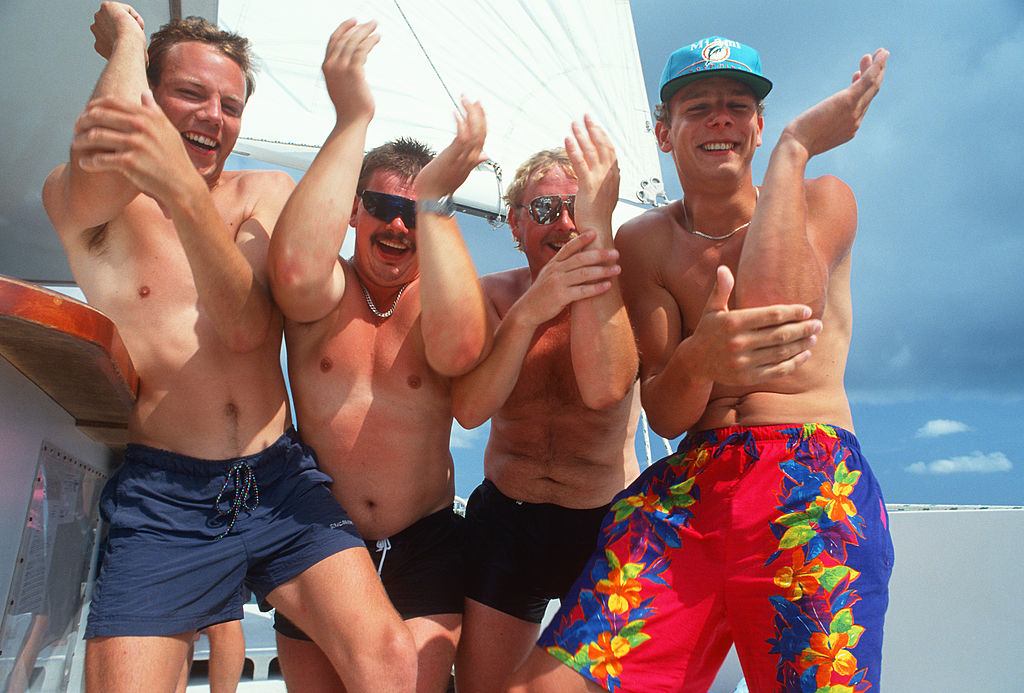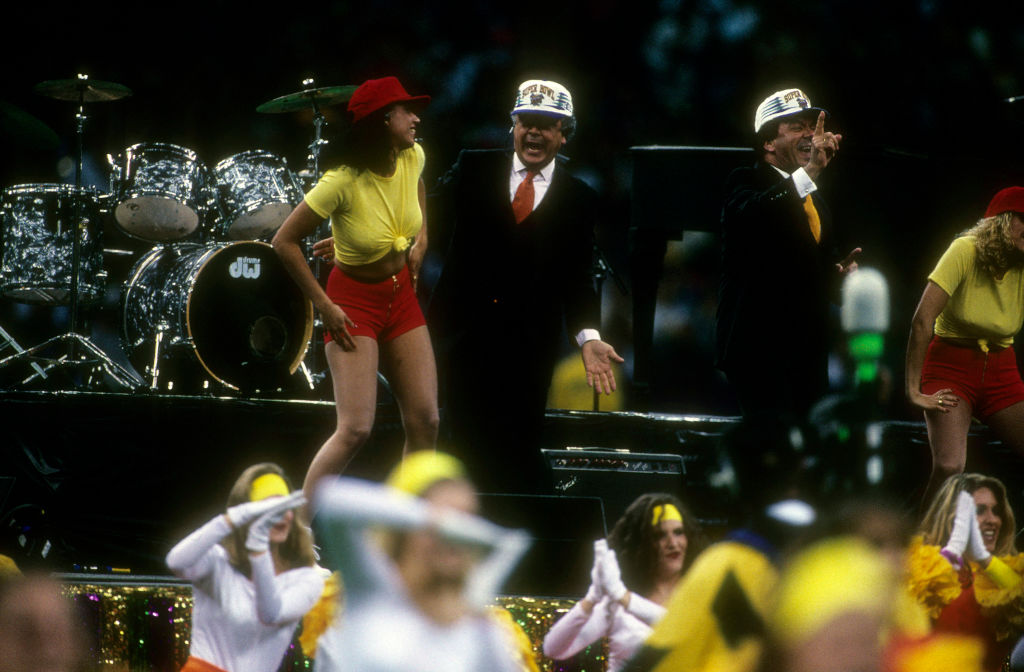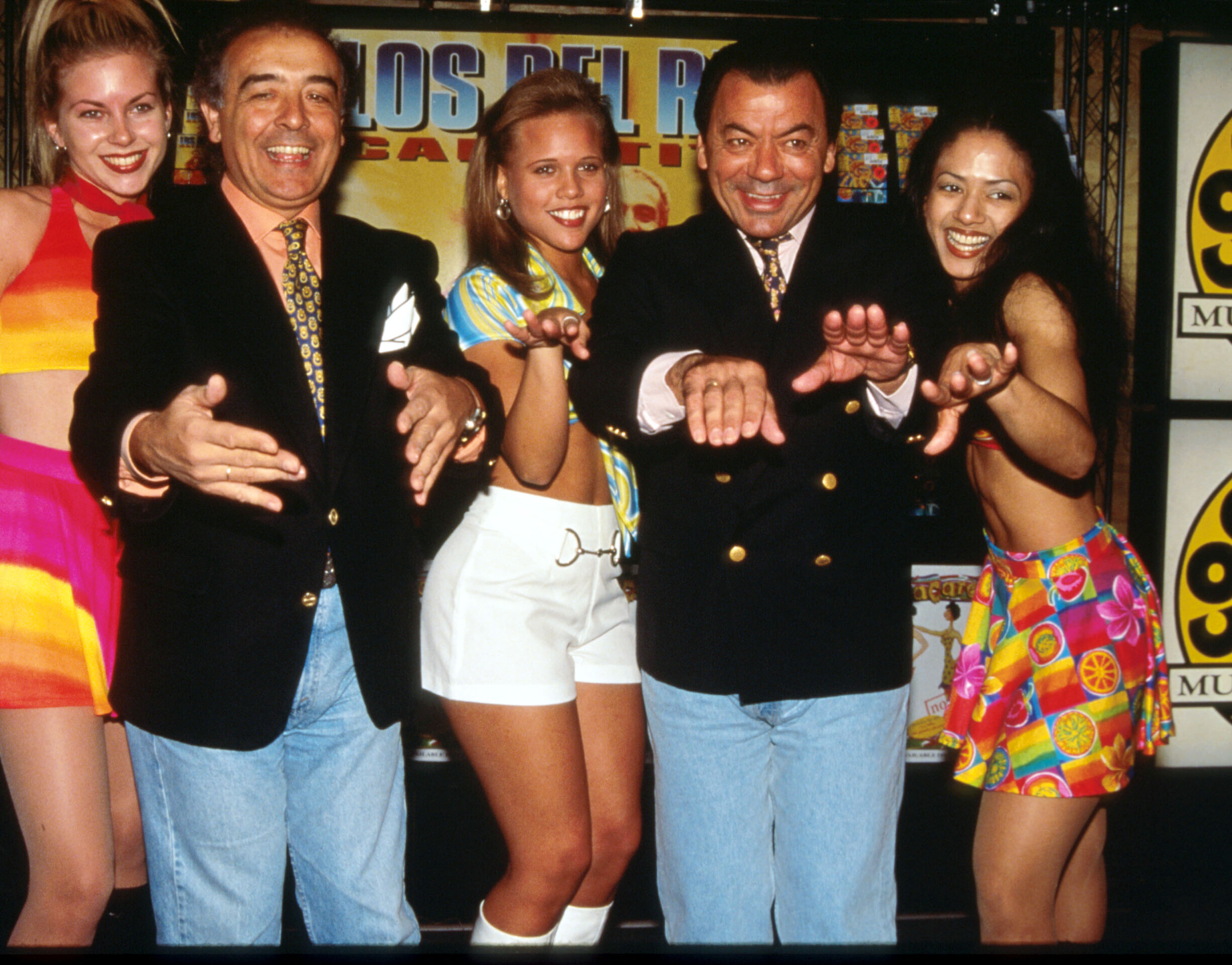Other than the mysterious sound the dinosaurs heard before being incinerated by an asteroid 66 million years ago, the greatest one-hit wonder of all time is arguably the quadruple-platinum Bayside Boys Remix of Los Del Río‘s “Macarena.”
On Aug. 3, 1996, “Macarena” mounted and held down the top spot on Billboard for three-and-a-half months straight. To this day, only Lil Nas X’s “Old Town Road,” Mariah Carey and Boyz II Men’s “One Sweet Day” and Daddy Yankee and Justin Bieber’s “Despacito” have spent more time camped atop the charts. Billboard went on to name “Macarena” number eight on their All-Time Top 100, as well as its top Latin song of all time.
In retrospect, there’s no clear reason why “Macarena” blew up like it did. It wasn’t a fantastic display of musicianship, it didn’t carry any real message, feature any dangerous or sexy performers, or even cause any specific feelings. It wasn’t “of the times” either. In 1996, alt-rock and Britpop dominated the Top 40 soundscape, though not even Smashing Pumpkins, No Doubt, Alanis Morissette or Oasis managed to bag a number one. For the most part, it was just a random unintelligible audio cartoon from two plump, grinning 48-year old Spaniards, whose hypnotic full-body dance was a distraction from the ills of ’96: Tupac being gunned down, mad cow disease ramping up, Rupert Murdoch launching Fox News.
Professor Robert Thompson, director of Syracuse University’s Bleier Center for Television and Popular Culture, can’t exactly call its success either, but does see the song as epochal elevator music for the shifting of an entire age of mankind. “Were we to anoint one song as the official anthem of the end of the second millennium, ‘Macarena’ would do very nicely,” he says. “Slouching toward Y2K, with Napster and the iPod lurking just around the next corner, we met this timeless oddment as the analog century was slipping away.”
Now neck-deep in our digital stage, broadband flings songs across the planet in seconds and one-hits are an everyday thing. In the crusty old days of circuits and tubes however, songs still had to propel themselves. Though we still have no idea why, “Macarena” certainly did cha-cha its own sweet ass into the history books. This is the story of its oddball journey.
Florida origins
For some artists, it takes a whole career to make just one hit, while others manage to make a career out of just one hit. For Antonio Romero Monge and Rafael Ruiz Perdigones, known to the masses as Los Del Río, it was both in equal proportion. Formed in 1962 in Dos Hermanas, Spain, a land of ridiculously exquisite olives, the duo began performing acoustic flamenco in town squares for passersby, before spending the next three decades as a no-frills fixture on the Latin pop scene. Regional hits came and went, one of which was “Macarena,” a simple two-chord strummer that, legend has it, was written on-spot for a dancer at a private party.
Like a particle of wayward pollen, this original “Macarena” crept across the Atlantic and into the hands of Miami Power 96 FM’s “Jammin’ Johnny” Caride, who in August 1995, recruited local production jefes Mike “In The Night” Triay and Carlos de Yarza to craft an English language dance remix. Caride and his crew had no idea what they had unleashed upon the world. The following August, three days after The Ramones performed their final show at the Palace in Hollywood, the Bayside Boys Remix of “Macarena” was somehow number one in the nation, forcibly lodged in the minds of millions, creating an earworm for the ages.
With little promotional funding, the last of the analog one-hits had overtaken both FM and AM stations, network and cable television, the Olympic games in Atlanta, and as Thompson found, video store aisles.
“I remember first hearing the song while I was in a Blockbuster, unaware that this was a wonderful world on the wane… its title was a mantra, its ‘one-hit wonder’ status lent it a certain context-free independence.”
Equally independent and out of context was the song’s single-angle music video, which relentlessly demonstrated its title dance, daily, over and over and over…and over on MTV and VH1.

Cuttin’ rugs
As dance crazes go, “Macarena” ranks alongside Chubby Checker’s “The Twist,” the Village People’s “YMCA,” Michael Jackson’s moonwalk during “Billie Jean” (which face it, no one could really do but Michael) and most recently, the spank-the-invisible-horse dance PSY executes during “Gangnam Style” (the stream count for which shattered YouTube’s entire web server, so maybe the pony punisher wins). But while these are all somewhat physically demanding, the Macarena is a simple and easy-paced dance that makes doers of all ages and physical conditions feel groovy. It can be done equally as well in a prone wheelchair during bingo hour as it can be in heels on the bridge of a cruise ship.
Done in silence, the Macarena could easily be mistaken for a roadside drunk driving test: lots of simple arm extensions and holds, occasional swaying of the body. The official version calls for the dancer to turn their body clockwise every now and again, but outside the club — while watching pasta boil, on the speakerphone at work, or waiting in line for a public restroom — most everyone does it standing in place. And unlike some of the aforementioned dances, Macarena moves are pretty innocent, though the song is a different beast altogether.

Qué es esto?!
Parents and their tweens, DJs at school dances, the entirety of the crowd at Yankee Stadium who broke the Macarena dance world record, if only they had known: the “Macarena” is about a threesome that disrespects a soldier. If you haven’t heard (though technically you have), Macarena is a woman who gets bored when her boyfriend joins the military, and decides to get with not one, but two of his best friends. Los Del Río don’t shame the hookup either: translated, the chorus urges the lonely mamí to “give your body some joy.” She was named Diana in the demo, but in an act of next-level freakiness, the Monge half of Los Del Río took the liberty of changing her name to Macarena, in honor of Perdigones’ daughter. Yikes.
For all the past Macareners now taken aback, it’s not your fault, translation apps weren’t a thing in 1996. That said, you could’ve held still and listened just once. Even the English lyrics include “Don’t worry about my boyfriend/If you’re good I’ll take you home with me,” and “Now come on, what was I supposed to do?/He was out of town and his two friends were so fine.”
Some speculators on Reddit take it a step further, interpreting the lyrics “I don’t want him/I can’t stand him/He was no good/So I…” (followed by a long female laugh), to mean she killed the guy.
The night the Dems Mac’d
If the year of “Macarena” had a high-water mark it was the 1996 Democratic National Convention, where in a spectacle of mass goof unmatched at any (legit) political event since, the song took possession of the United Center in Chicago like the Holy Spirit at a Baptist revival. Thompson remembers the seminal moment as “History dancing to a transient party song at an important quadrennial ritual of the American republic, absorbing the entire cast of that ritual with its seductive Dada appeal…and most importantly, it was all on tape.”
The CSPAN2 footage is a truly absurd and beautiful thing to watch. It wasn’t just audience members, even typically stoic representatives and high-power delegates Mac’d out, and hard. No one had it right, or cared, everyone grinned and no one stopped moving for 4 minutes and 13 seconds!
Go ahead and watch it, it’s worth it; find the big man on the table whose suit starts to rip. See the lady making an inflatable cow do the dance walk into a Secret Service agent. Watch the skeevy old dude at 1:27 enjoying himself a little too much.
Granted the top-brass didn’t go all out, but they showed love — President Bill Clinton flashed his lip-nibble Elvis smile and double-fist-pumped. First lady Hillary Clinton clapped herself into a trance and made one tremendously creepy expression after the song’s “I am not trying to seduce you” vocal sample. And at the crux of his big speech, Vice President Al Gore called for silence so he could demonstrate what he called “the Al Gore version of the Macarena,” which consisted of a motionless stare. All fun stuff, but later that year Gen. Colin Powell showed them all up when he threw down stone-faced at an Arizona Boys & Girls club.
Sacred geometry
Speaking of dancing deep state government agents, y’all want to get weird?
It just so happens that performing the Macarena requires a dancer to replicate limb positions with arm angles similar to those in Leonardo Da Vinci’s legendary “Vitruvian Man.” And that’s nothing: the eight limbs on “Vitruvian Man” portray 16 possible limb position combinations while the eight parts of the Macarena dance include 16 different limb position combinations. Coincidence? Perhaps, but judging by Hillary Clinton’s face at the 1996 DNC, doing the Macarena must release some sacred pleasure at the deepest levels of consciousness.
Maybe Macarena moves just make the average person feel gorgeous — after all, Da Vinci chose the “Vitruvian Man” body form as the best means of portraying the most beautiful male models of 15th century Milan. And this is to say nothing of the total waist shakes in a Macarena performance and their correspondence to the Fibonacci sequence, a universal pattern of shapes found throughout the most wondrous structures of nature, including seashells, hurricanes and galaxies. But we’ll save that one for the 26th anniversary.

Into the sunset
As of publication, Los del Río have released 50 albums containing nearly 500 tunes, including multiple regional hits, but have never again manifested anything as tectonic as “Macarena.” But what does it matter?
Their jam went quadruple-platinum, as of 2003 they were still bagging quarter-mill royalties, and for two men of lifelong faith who once performed at the Vatican for Pope John Paul II and Mother Teresa, Los Del Río have essentially sung at the throne of Almighty God. Add in a performance at Super Bowl XXXI, and the legendary Julio Iglesias expressing his envy of your “two huge sets of cojones,” in person, at a major awards event, and where does a mortal go from there?
Well, to celebrate the 25th anniversary of their magnum opus, Monge and Perdigones, now 73, are headed back to the homeland this August, throwing a sold-out AirBNB escape in a sprawling Andalusian villa, where alongside their hosts, guests may eat breathtaking olives, ride stallions through wheat fields, sing off-key while the two strum their acoustics, and as the rosy Spanish sun sinks low, receive personal Macarena lessons. Though tickets sold out instantly, it couldn’t hurt to just show up out front and shake it. Macarena herself never took no for an answer.




